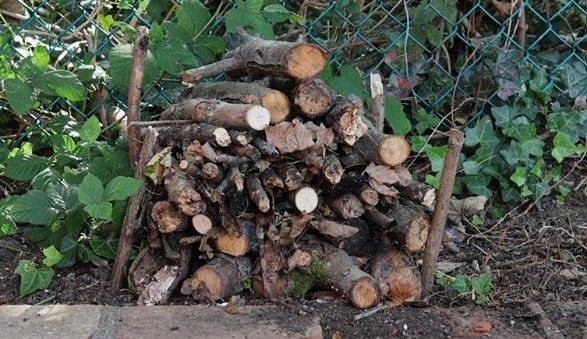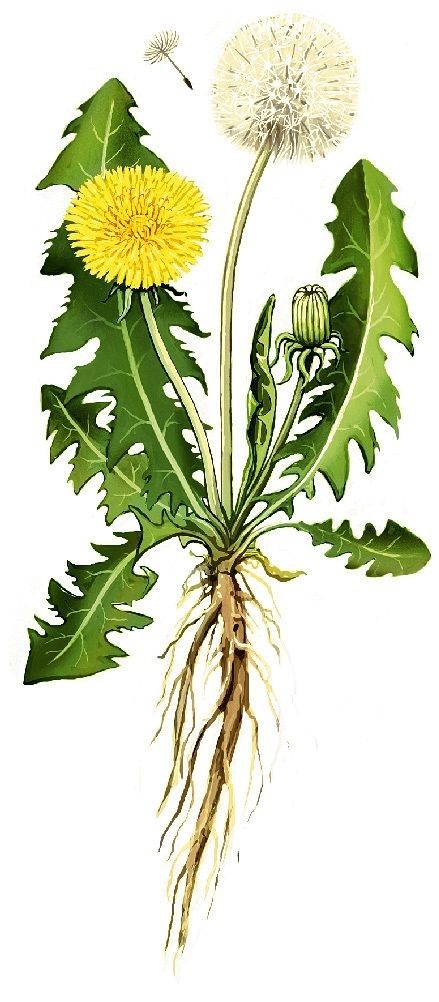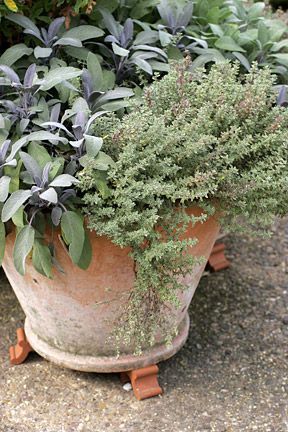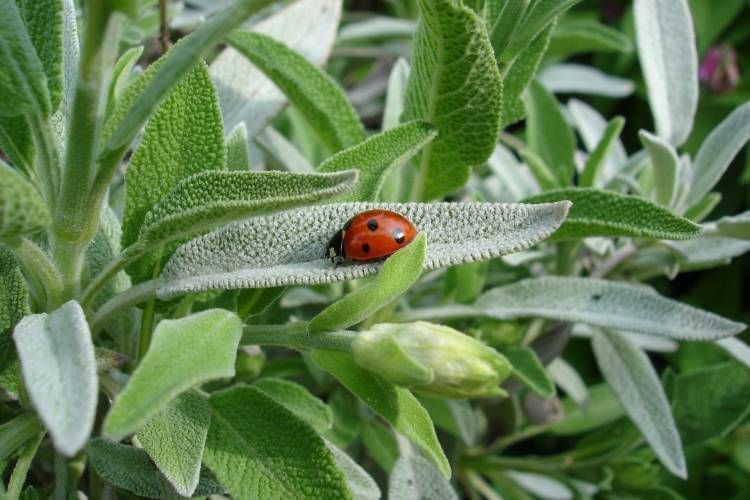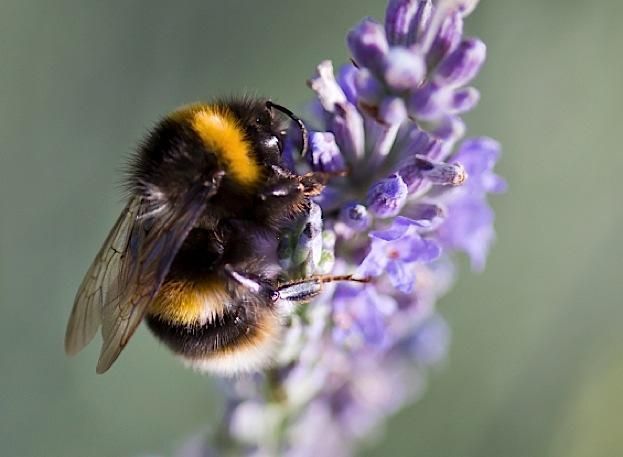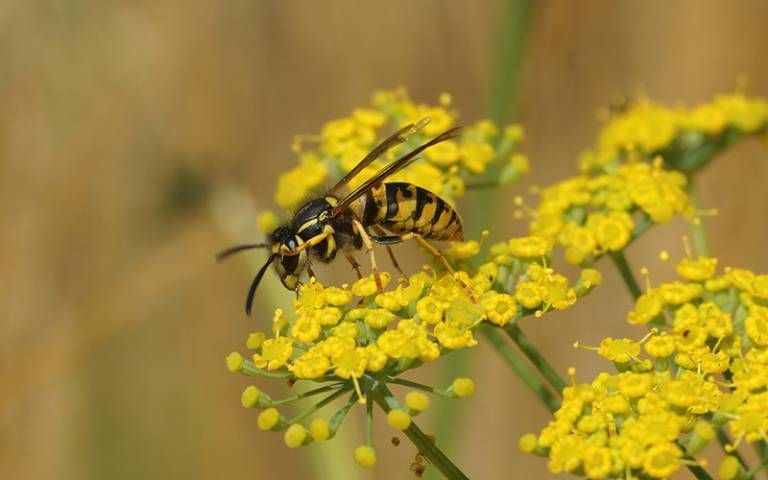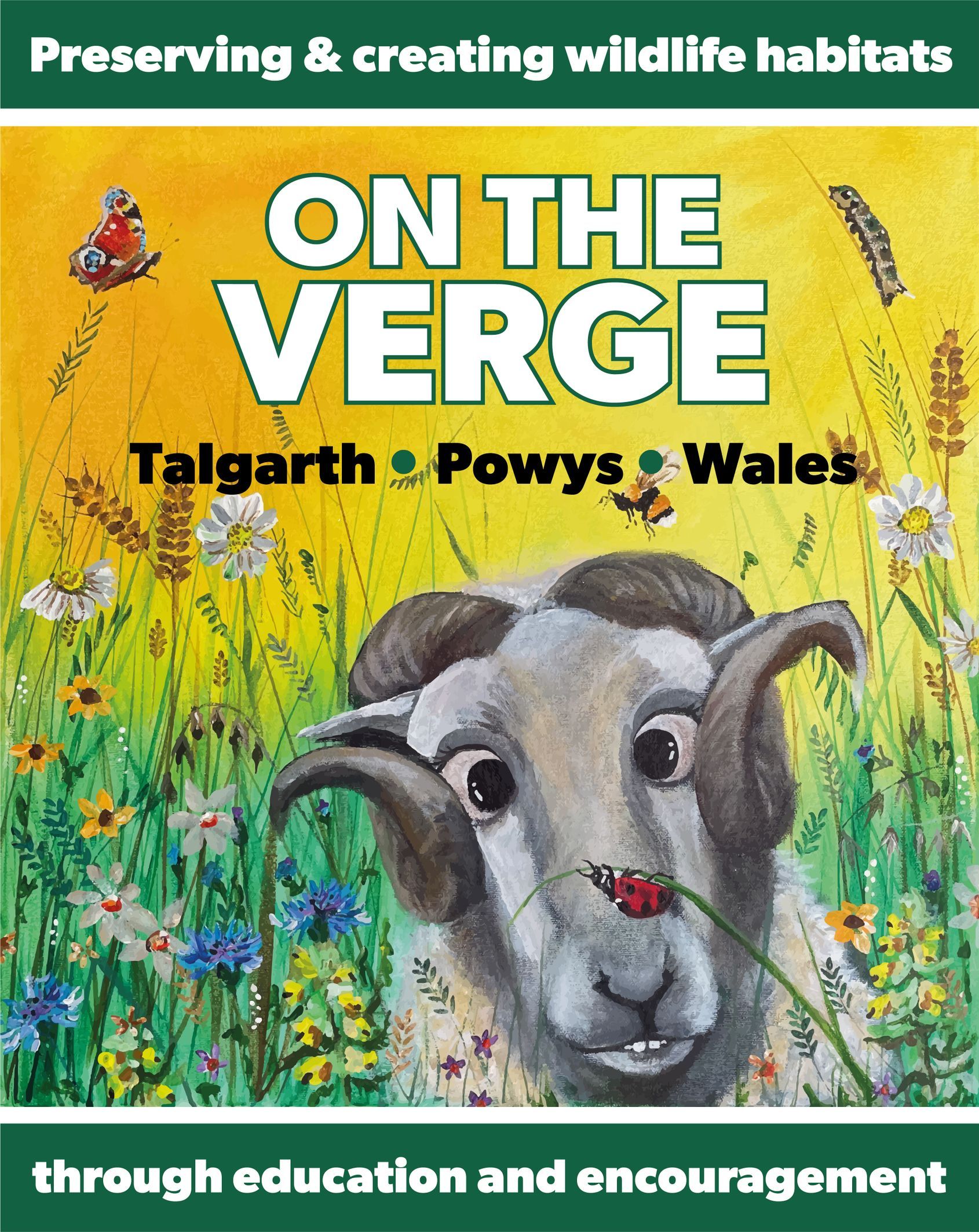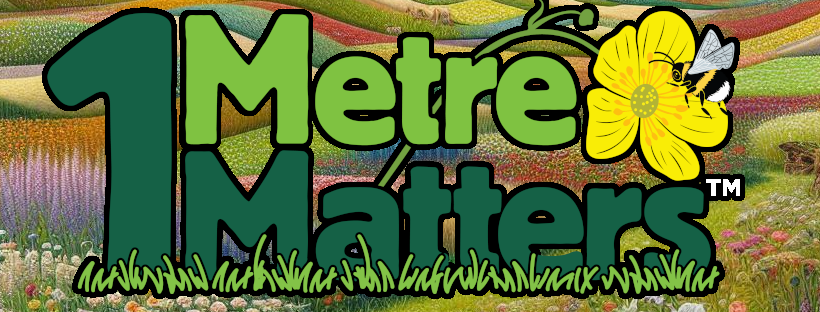

The Powys Nature Partnership is collaborating on nature recovery in Powys.
1MetreMatters is a great initiative to support wildlife in a small area, which will increase biodiversity in our landscape. By taking part, you will be contributing to the delivery of the Powys Nature Recovery Action.
An update from On The Verge Chair – Martin Draper.
Our mission is preserving and creating wildlife habitats through education and encouragement. Just 1metre can provide essential habitat and improve the biodiversity in our green spaces.
Our hope is that, as a result of taking part in this scheme, YOU will be responsible for the upturn in the insects lives and the proliferation of our natural world.
We will be with you every step of the way...
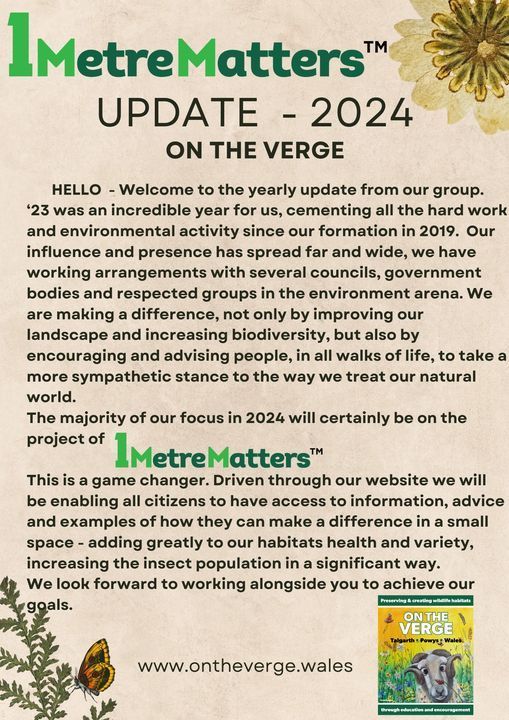
1MetreMatters Wild Flowers from Seed
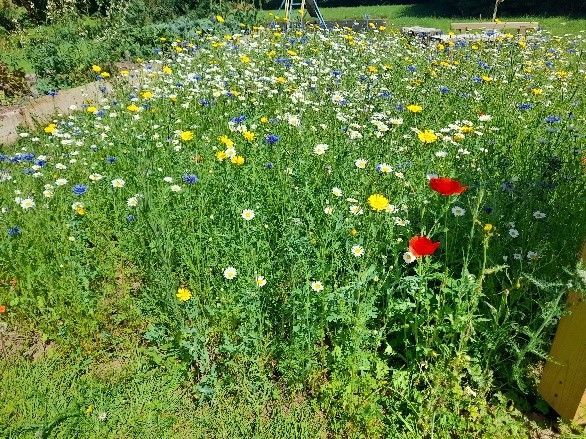
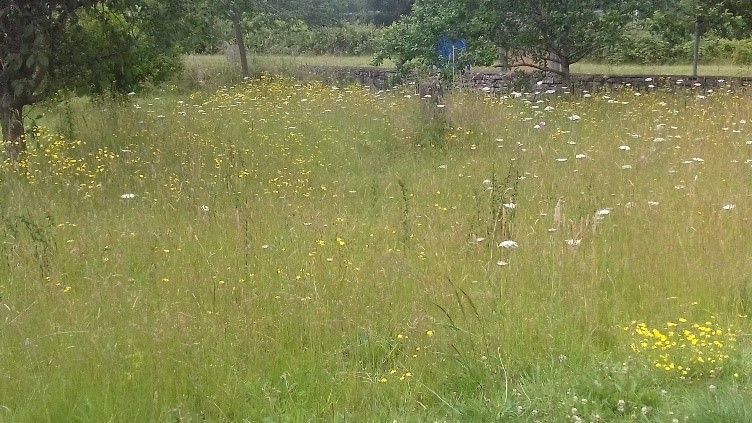
1MetreMatters
One woman and her garden journey...
Listen to Rebecca and her journey to a more sustainable garden
Rebecca Rea is an animal communicator, therapist for people and animals, teaches meditation and is a nature artist. Over the coming year she will be sharing some top tips from her experience of wilding through short video clips on this page.
You can contact Rebecca at www.theanimalhealer.life
1MetreMatters
Supporting nocturnal wildlife with just one metre
Article supplied by Just Mammals Limited
Gardening isn’t just about creating an outdoor space for ourselves, it’s also about protecting the environment around us.
This is especially important in Wales, as it is the home of a variety of wildlife including both lesser and greater horseshoe bats, whose populations are currently extremely restricted across the UK. There are several steps you can take to enhance your garden using only one square metre, with nocturnal wildlife in mind.
For nocturnal wildlife to use a space, it must be dark. Artificial lighting at night disrupts circadian rhythms of nocturnal animals, affecting their navigation, breeding, and general health. To combat this, lights should be:
• A warmer tone;
• Positioned as low as possible;
• Covered by a hood that directs light downwards;
• Turned off when not in use, on a timer or motion activated.
Consider incorporating features that provide nocturnal creatures with opportunities for shelter. Building a hedgehog hideaway and leaving gaps under garden fences will encourage hedgehogs into your garden and will allow them to travel further distances – hedgehogs can move upwards of one mile per night! Adding bat boxes to an outdoor space that does not naturally have many roost features encourages bats into areas that they could not previously inhabit, with different types of bat boxes encouraging different species and roost types.
By making these adjustments, you will not only be creating a more welcoming and usable environment for nocturnal wildlife, but also contributing to the preservation of Welsh biodiversity.
https://www.justmammals.co.uk/
Check out the Dark Skies and light pollution in Wales dashboard https://luc.maps.arcgis.com/apps/dashboards/1cd6ba8a1d7d4a62aff635cfcbaf4aec
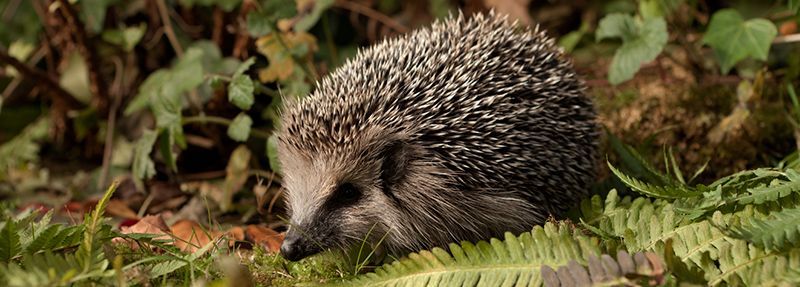
1MetreMatters
Nature Recovery in Powys
In 2022 Powys County Council declared a Nature Emergency and the recent State of Nature Report shows that 1 in 6 species in Wales is at risk of extinction.
Powys Nature Partnership
To help coordinate nature recovery actions the Powys Nature Partnership (PNP) was formed.
A partnership of people and organisations with environmental knowledge and a passion for increasing biodiversity in Powys.
New members to the partnership are always welcome – if you or the organisation you represent are willing to work collaboratively or have the skills, time or expertise to further the aims of the Partnership to contribute to nature recovery in Powys please let us know.
The Powys Nature Partnership will be coordinating nature recovery actions across Powys in the coming years. However, there is much to do as the recent State of Nature Wales in Wales Report highlights, with continuing declines in nature.
Helping Nature Recover in Powys
You can help nature recover by making gardens and green spaces more wildlife friendly, recording wildlife and choosing what you buy.
Contact the Biodiversity Team at biodiversity@powys.gov.uk for more information, to join the Powys Nature News mailing list or visit https://en.powys.gov.uk/biodiversity for more information.
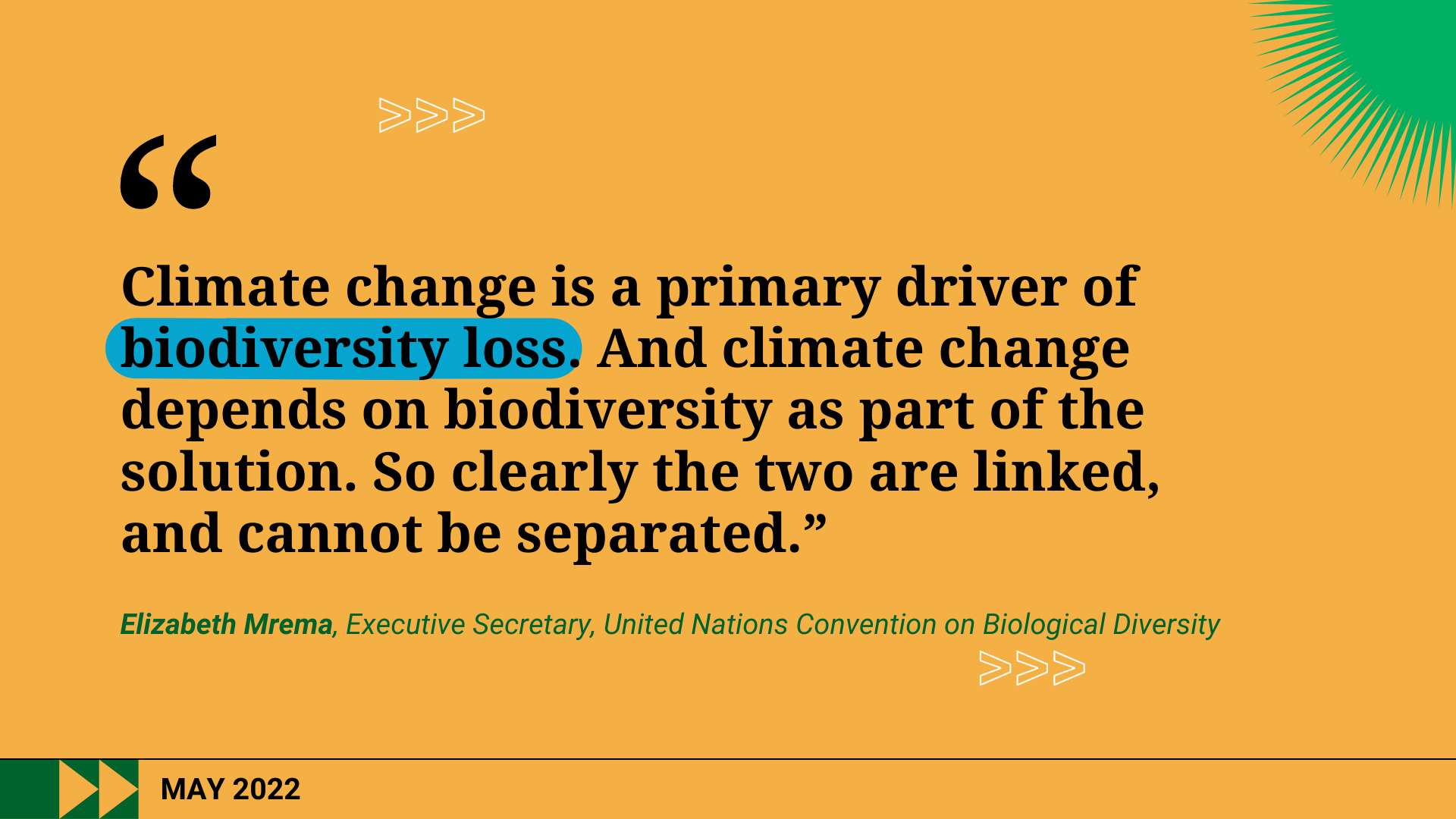
1MetreMatters
Words to help you understand, start or sustain your environmentally focused journey...
ENVIRONMENTAL DECLINE and FALL
In case anyone thinks the decline in British wildlife is a new phenomenon, Brian Vesey-Fitzgerald, author and editor of
The Field magazine from 1938–1946, was bemoaning the destruction of English countryside as far back as 1969 in his book
'The Vanishing Wild Life of Britain'.
Vesey-Fitzgerald, B.S, (1969) MacGibbon & Kee Ltd, London.
Fifty years on from the publication things have only got worse, and here is where human nature plays its part.
Recently,
Peter Kahn and Theo Weiss formulated the concept of environmental generational amnesia. “The Importance of children interacting with Big Nature".
Children, Youth and Environments 27, no. 2: 7-24. Kahn, P.H., Jr., and T. Weiss (2017)
It is a phrase that describes how each generation views the world into which it was born, no matter how degraded, as normal and its environmental baseline.
Within a generation, children’s lives have largely moved indoors, with the loss of free-ranging exploration of the nearby natural world, even as research indicates that direct experiences of nature in childhood contribute to care for nature across the life span.
1MetreMatters
UNDERSTANDING ENVIRONMENTAL WORDS
Remember, understanding these terms empowers us to make informed choices and contribute to a more sustainable world!
Biodegradable
Materials that naturally break down over time and return to the Earth without any processing
Compostable
Items that can be composted, contributing to nutrient-rich soil when properly disposed of.
Recyclable
Products or materials that can be recycled and used to create new items.
Carbon Footprint
Measurement of carbon emissions produced by an activity, individual, or product.
Sustainable
Practices that meet present needs without compromising the ability of future generations to meet their own needs.
Organic
Refers to products grown without synthetic pesticides or fertilizers.
Eco-friendly
Broadly used to label items as not harmful to the environment.
Climate Change
Refers to global shifts in climate patterns due to human activities.
1MetreMatters
BOOK RECOMMENDATIONS
What I Stand for Is What I Stand On
Wendell Berry - Penguin Classics
“Incredibly insightful essays on our disconnect from nature and how our current economy is unsustainable”.
A Field Guide to Roadside Wildflowers At Full Speed is a freely downloadable ebook in PDF format by Chris Helzer, The Prairie Ecologist.
https://prairieecologist.com/2020/01/13/finally-a-practical-guide-for-roadside-wildflower-viewing/
Although the book is intended comedic entertainment, it’s also entirely factual, interesting and it contains real photographs and information about the flowers in question.
The Life of the Robin – David Lack.
First published in 1943 – you’ll never see the Robin in the same way again.
A Field Guide in Colour to Wild Flowers by Dietmar Aichele. Illustrated by Marianne Golte- Bechtle. Published by Octopus
“Exceptionally good book, really well laid out and written. This will never be out of date - I’ve been using this since 1978”. MD
What can I put in my 1 Metre?
1MetreMatters has been working with Keep Wales Tidy on a joint schools project and we are providing children with ideas of what to put in their 1Metre to help the environment and increase insect numbers.
